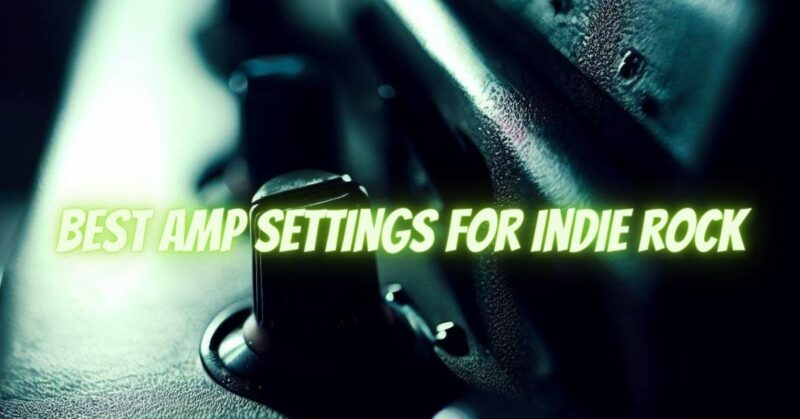Indie rock is a diverse and popular genre that blends various musical influences, creating a unique and distinctive sound. To achieve the signature indie rock tone, guitarists must dial in specific amp settings that complement the genre’s dynamic and textured nature. In this article, we will explore the optimal amp settings for indie rock music, helping you achieve that sought-after sound for your performances and recordings.
- Amp Type and Characteristics
When selecting an amplifier for indie rock, consider using a tube or modeling amp. Tube amps offer warm, organic tones and natural compression that can add depth to your sound. Modeling amps provide versatility and the ability to simulate various amp and effect combinations, allowing you to experiment with different indie rock tones.
- Gain and Overdrive Settings
Indie rock often incorporates a balance of clean and overdriven tones. Start with a moderately low gain setting for your rhythm parts to achieve a clean and jangly sound. For the lead or more aggressive parts, dial in a moderate to medium overdrive setting to add grit and punch to your tone.
- EQ Settings
For the foundational indie rock tone, consider the following EQ settings:
- Bass: Set the bass around the 9 o’clock to 12 o’clock position to provide warmth and body without overwhelming the mix.
- Midrange: Boost the mids to approximately 12 o’clock to 3 o’clock to bring out the characteristic midrange presence and cut through the mix.
- Treble: Keep the treble around 11 o’clock to 2 o’clock to add clarity and brightness to your sound without becoming too harsh.
- Reverb and Delay
Reverb and delay are commonly used effects in indie rock to create a sense of space and add depth to the sound. Set the reverb to a moderate level to provide a subtle ambient wash. For delay, use a short to medium delay time to add a sense of echo and space to your sound.
- Modulation Effects
Indie rock often incorporates modulation effects such as chorus and tremolo. Use a subtle chorus effect to add dimension to your clean tones, and experiment with tremolo to achieve pulsating and rhythmic textures in your sound.
- Volume and Dynamics
Indie rock is known for its dynamic shifts, so pay attention to your picking dynamics and guitar volume knob. Use the volume knob on your guitar to control the intensity of your sound and create expressive swells and fades.
- Experiment and Find Your Sound
The optimal amp settings for indie rock can vary depending on the specific style and preferences of the guitarist. As you dial in your tone, don’t be afraid to experiment with different settings, effects, and amp combinations to find the sound that best represents your unique style within the indie rock genre.
Achieving the optimal amp settings for indie rock music requires a combination of specific EQ settings, effects, and dynamics. Focus on balancing clean and overdriven tones, dialing in the right amount of reverb and delay, and experimenting with modulation effects to achieve that characteristic indie rock sound. Remember that finding your own sound within the genre is essential, so take the time to explore different settings and effects to create a tone that reflects your musical vision and style.

